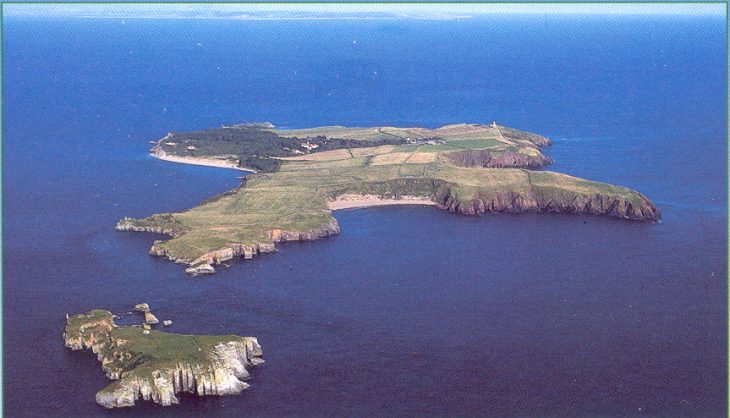Caldey Island (called in Welsh, Ynys Bŷr, after an early abbot) lies south of Tenby in Pembrokeshire, Wales. The island’s name ‘Caldey’ comes from the Viking name Keld-Eye meaning “cold island”.
The Island is home to a small village, but is best known for its monastery. Caldey Island is separated from the mainland by the Caldey Sound which is 1km to 2km wide between Caldey Island 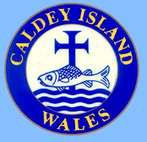 and the coast of Pembrokeshire. A ferry service from Tenby crosses the sound during spring and summer.
and the coast of Pembrokeshire. A ferry service from Tenby crosses the sound during spring and summer.
Limestone was quarried here in the 19th century and taken to local lime kilns, some even going as far afield as the Annery kiln on the Torridge in North Devon.
A Celtic monastery was founded on the island in the sixth century, and a Benedictine foundation existed from 1136 until the dissolution of the monasteries in 1536. An Anglican Benedictine community, lead by Aelred Carlyle, came in 1906 and built the current abbey. They were received into the Roman Catholic Church in 1913, but left Caldey in 1925 due to financial difficulties and moved to Prinknash Abbey. The Reformed Cistercians, now in residence, came in 1929 from Scourmont Abbey in Belgium .
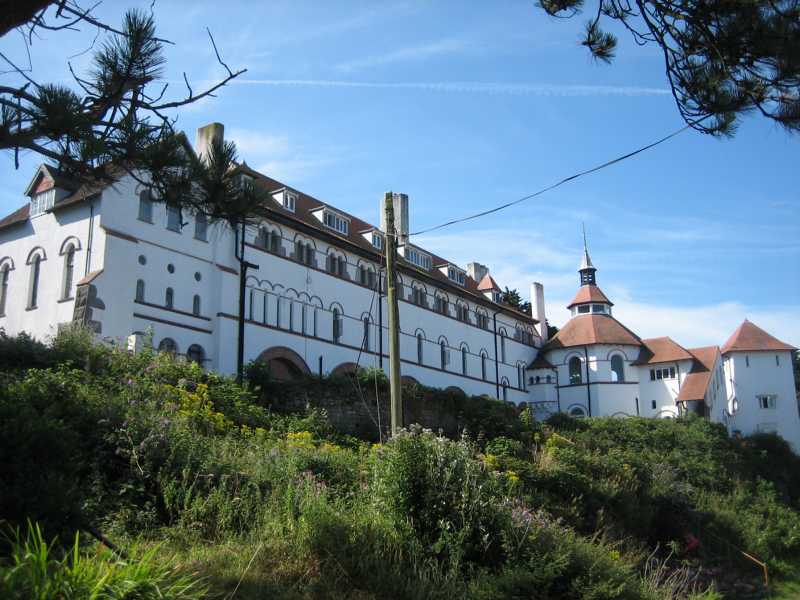 Boats sail to the island from Tenby during the summer months. Attractions on Caldey include a Norman chapel, a twelfth century church, the sixth century Ogham cross, and the twentieth century Abbey. Caldey Lighthouse was built in 1828.
Boats sail to the island from Tenby during the summer months. Attractions on Caldey include a Norman chapel, a twelfth century church, the sixth century Ogham cross, and the twentieth century Abbey. Caldey Lighthouse was built in 1828.
The principal income for the island is tourism, with perfume and chocolate production providing winter incomes. The monastery opened an internet shop in 2001. The island also provides a spiritual retreat throughout the year.
There is a private guesthouse on the island as well as a fire engine, ambulance and a Coastguard team.
Our trip to Caldey island was during the Summer of 2006 and was our first trip away to take part in the RSGB IOTA Contest. It was also only the first time that Nigel MØNJW and myself had operated from an Island. Expectations were not too high but we decided to try the island and see how receptive it (and the Monks) would be with us.
Caldey Island does not allow visitors to saty on the Island during the evening and night time unless you are either a r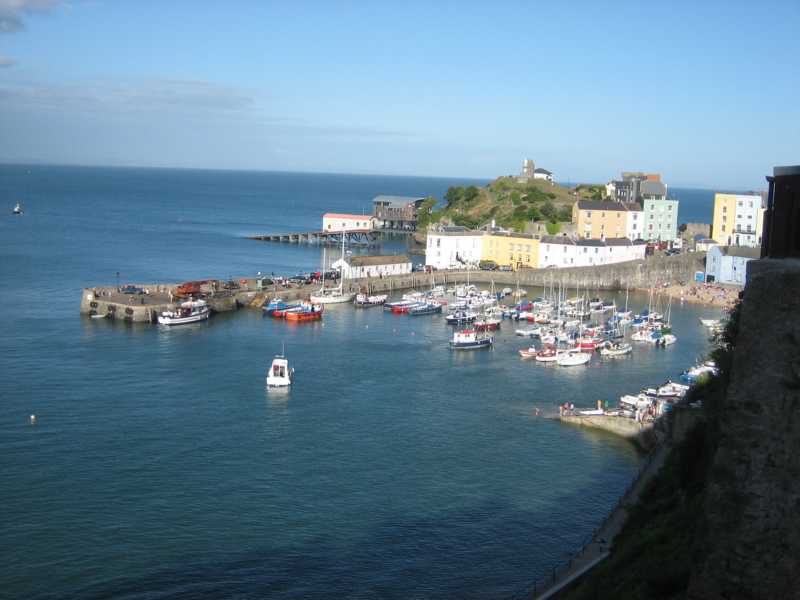 esident, a visitor to a resident or unless you are staying in the only accomodation on the island. We had been seeking advice and help from the owners of Ty Gwyn and the accomodation sounded just what we wanted. We also decided that we would not go alone and from that idea we asked around and were pleased when Tony 2EØZRL said he would attend although he wasn’t too bothered about operating. My Son Luke M3ZLZ was also co-opted to join us as was Nigel’s father John, who would join us a few days into our 8 day stay.
esident, a visitor to a resident or unless you are staying in the only accomodation on the island. We had been seeking advice and help from the owners of Ty Gwyn and the accomodation sounded just what we wanted. We also decided that we would not go alone and from that idea we asked around and were pleased when Tony 2EØZRL said he would attend although he wasn’t too bothered about operating. My Son Luke M3ZLZ was also co-opted to join us as was Nigel’s father John, who would join us a few days into our 8 day stay.
We arrived in Tenby, South West Wales (Photo – Right) on the Sunday evening and had arranged to be transported to the Island by one of the main tour operators of the area, early on the Monday morning. We had also done a recce of the area in a day trip several weeks before so we new exactly how things would go. The main thing to do on this evening was to go to the local supermarket and order our provisions for the week. The supermarket 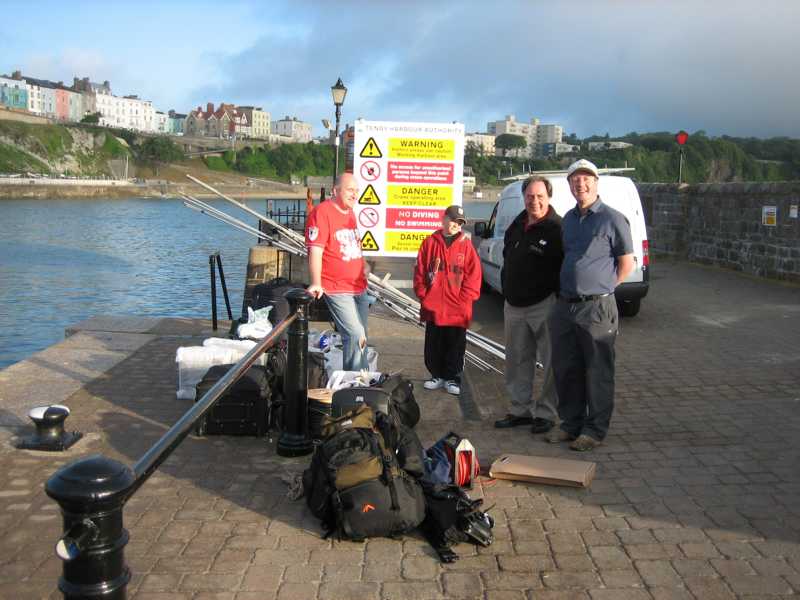 was accustomed to taking orders for the Island and then they would drop it off on the harbour the following morning. It would be taken to the island where we would meet the boat and collect the shopping at the appropriate time, tides pending of course.
was accustomed to taking orders for the Island and then they would drop it off on the harbour the following morning. It would be taken to the island where we would meet the boat and collect the shopping at the appropriate time, tides pending of course.
After spending night in local accomodation we arose at first light and drove down to the harbour to await arrival of the transport. We didn’t have masses of equipment so we unladened the vehicles and then drove them to a local car park where they would be left for the duration of the 8 day trip (Photo – Left).
The boat arrived on time and we loaded all our gear. Also joining us were several visitors who were to stay in the Monastery or with friends on Caldey Island. There were no public allowed on this crossing only residents and/or as we mentioned 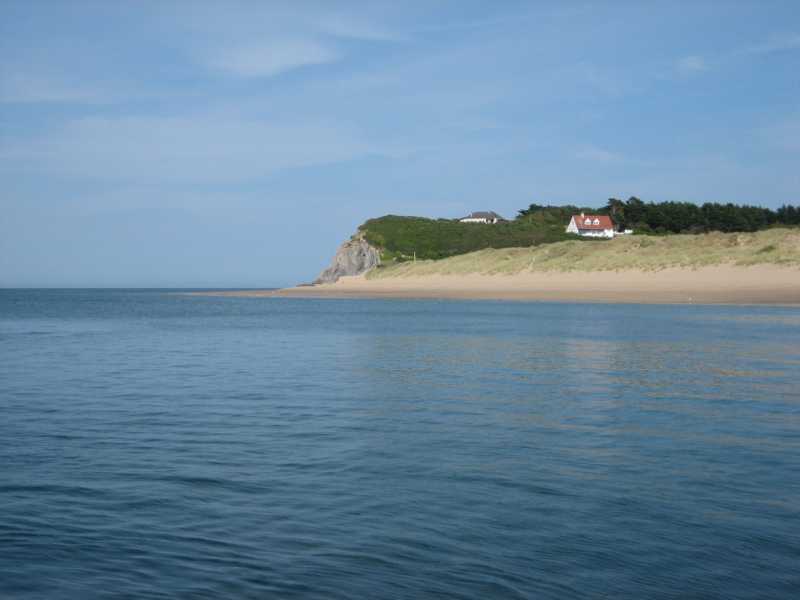 above. At this point we got our first good look at our accomodation albeit from a distance (Photo – Below).
above. At this point we got our first good look at our accomodation albeit from a distance (Photo – Below).
Caldey Island also has a beautiful Lighthouse but it is on the opposite side to the accomodation and was not visible to us on the approach.The present lantern of it was fitted around the middle of the nineteenth century and consisted of 20 Argand lamps and reflectors, subsequently replaced by a helical lantern later in the nineteenth century.
The Lighthouse was converted to automatic operations in 1929. It was the last Trinity House lighthouse to be powered by gas, eventually being converted to electricity in 1997.
The light was intended to help coastal traffic trading limestone and coal to mid and north Wales but the light also helped long-distance and north American traffic identify the Bristol Channel and avoid confusion with the English Channel.
The lighthouse keepers cottages, that flank the Lighthouse, are two-storey, with hipped roofs, octagonal chimneys, and a one-storey linking corridor. This forms a ‘U’-shape, with the Lighthouse at the centre of the south side, and enclosed gardens to the north. The cottages were built around 1868-70. We would visit the Lighthouse sevral times whilst on the Island as its location was far far different than the side of the Island we were on.
On arrival we were met by the ‘owners’ of Ty Gwyn. They made us very welcome and also allowed us to use their vehicle to 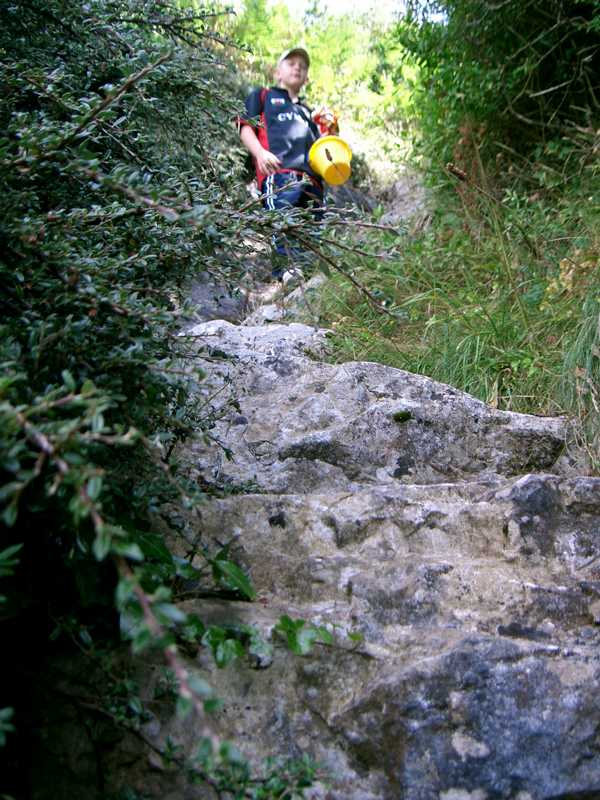 transport some of our gear back to the accomodation. I had the ‘Clarke’ pump up Mast with me and chose what i thought was the shortcut to the house along the beautiful sandy beach – how wrong one can be! It all looked easy until i reached the far side of the beack where Luke and I were met by a seriously steep climb up to the property (Photo – Left).
transport some of our gear back to the accomodation. I had the ‘Clarke’ pump up Mast with me and chose what i thought was the shortcut to the house along the beautiful sandy beach – how wrong one can be! It all looked easy until i reached the far side of the beack where Luke and I were met by a seriously steep climb up to the property (Photo – Left).
On a brighter note, the weather was very kind. it was very hot in the sun and being in a South West direction meant that we had fantastic conditions for not only the trip as a whole but also for erecting antennas. I started work pretty much straight away on the 3 element beam we had and also on the wires for 40 and 80M. 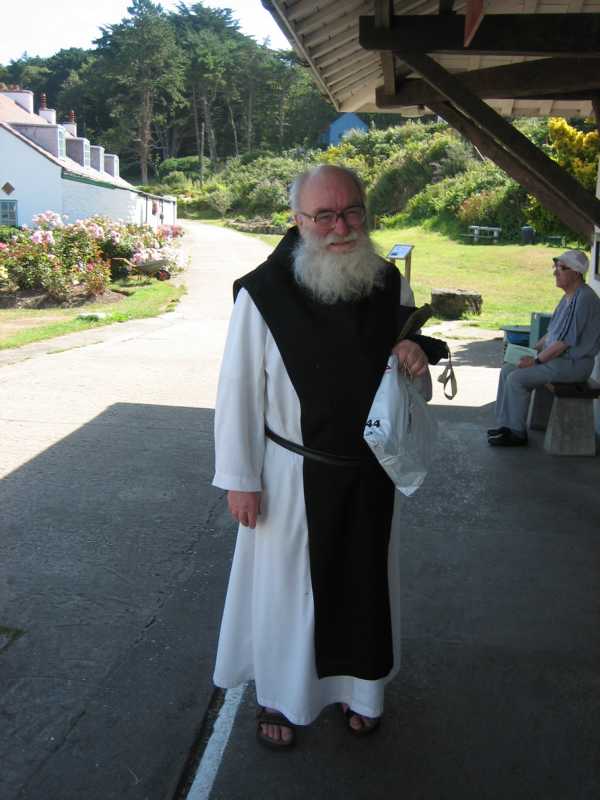 The ‘Clarke’ mast coped quite well with the small rotator and beam albeit only at around 18 to 20 feet from the ground. We were in fact quite elevated at our location so we had a pretty good take off in all directions although South was probably the worst as we were beaming up hill towards the Monastery and Lighthouse. Nevertheless we were soon on the air as ‘GB4CI’.
The ‘Clarke’ mast coped quite well with the small rotator and beam albeit only at around 18 to 20 feet from the ground. We were in fact quite elevated at our location so we had a pretty good take off in all directions although South was probably the worst as we were beaming up hill towards the Monastery and Lighthouse. Nevertheless we were soon on the air as ‘GB4CI’.
Operating was our usual style – casual. We set one station up in the upstairs of the property and the second down below. The downstairs station consisted on the Yaesu FT1000MP MKV Field, Palstar AT1500CV ATU, Acom 1000 Amplifier and Laptop running on the 3 ele beam. The station above had the Kenwood TS570DGE and was running barefoot on the low band wire dipoles. Both stations were getting out ok but we were soon to find during the contest that on receive we were really struggling. Nigel kicked off with the operating as always and the rest of us were making most of the first class hospitality as well as keeping Luke occupied, as you do with any 10 year 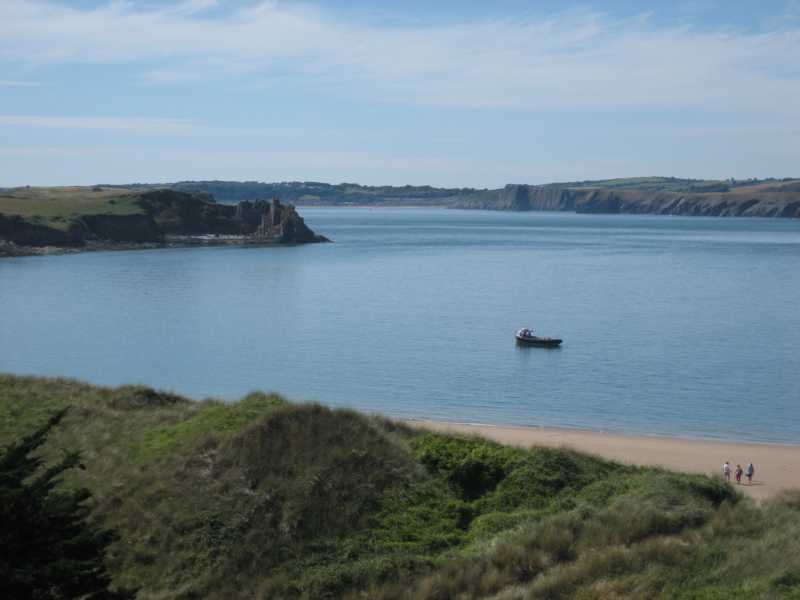 old kid. The operating was going well and Nigel was working the world literally with contacts into the Far East but mainly Europe and North America. Tony was also working well. He was using his hand-held tx and was very happy working the short distance across the bay back to mainland UK. He had numerous contacts on 2M and 70CM, some of which got to be regular skeds for the period we were there.
old kid. The operating was going well and Nigel was working the world literally with contacts into the Far East but mainly Europe and North America. Tony was also working well. He was using his hand-held tx and was very happy working the short distance across the bay back to mainland UK. He had numerous contacts on 2M and 70CM, some of which got to be regular skeds for the period we were there.
As the week went on we enjoyed almost a full week of glorious sunshine and only one day of cooler temperatures, quite good for the UK and i guess we dropped on lucky. We took time out to enjoy the Island and visit the various places such as the Monestary and the mass held by the Monks in the local Chapel at very early hours in the morning.
Radio was going well and through most of the week we continued with good conditions and the log ever increasing. Everything seemed to be good for us as the week progressed and we were confident we could put up a half decent attempt in the Contest. We started the IOTA Test with mucho gusto and radio conditions 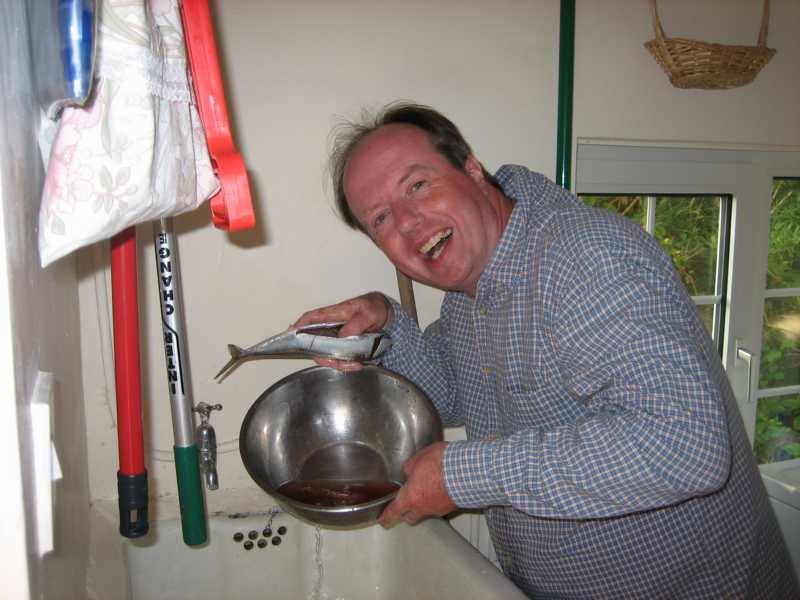 were good albeit extremely busy as is normal for this contest each Year. There is little to say about it really other than we were let down by bad preparation on our part which led to an overall poor result. The 3 element antenna did not perform as expected and with hindsight we should have had a test with it prior to the trip. It had been in use right up to the week before the contest so we expected nothing to change. There was no doubt we were putting a good signal out but it appeared that receive for some reason was very poor. We got the odd person on air saying ”SA are calling”, that sort of thing but we were hearing little. It was a strange one as we had worked well prior to the contest too so it was a shame if nothing else. Maybe it wasn’t set up correctly in the first instance but no excuses, we let ourselves down. Nevertheless we didn’t give up and continued to do the whole session as planned and as ‘GW5X’.
were good albeit extremely busy as is normal for this contest each Year. There is little to say about it really other than we were let down by bad preparation on our part which led to an overall poor result. The 3 element antenna did not perform as expected and with hindsight we should have had a test with it prior to the trip. It had been in use right up to the week before the contest so we expected nothing to change. There was no doubt we were putting a good signal out but it appeared that receive for some reason was very poor. We got the odd person on air saying ”SA are calling”, that sort of thing but we were hearing little. It was a strange one as we had worked well prior to the contest too so it was a shame if nothing else. Maybe it wasn’t set up correctly in the first instance but no excuses, we let ourselves down. Nevertheless we didn’t give up and continued to do the whole session as planned and as ‘GW5X’.
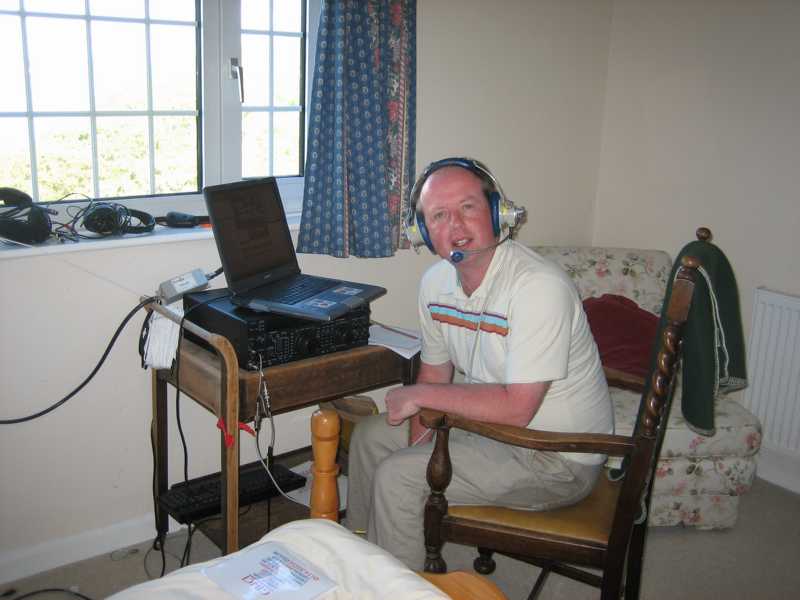 At the conclusion of the trip we ended with 2,476 q’s in the log (or should I say ‘logs’!), abysmal by current standards. Lessons were learned and these errors on our part have not been repeated since. We had a fantastic time on the Island and one of the highlights of the trip was to be taken Makerel fishing by the Monks. Some of the team performed better than the others but we came back with a good haul. We prepared the fish ourselves and John provided a great cooked meal and they were fantastic. We were suprised the following day when we received an unscheduled visit from our Monastic friends. They kindly brought a massive amount of the Fish that they had smoked in their own smoke house. Again what a great gesture to us and it showed to us that at least they were happy with our visit and that we respected both the Island and indeed the way of life on the Island too……even if the house reaked of Smoked Makerel for the remainder of the trip!
At the conclusion of the trip we ended with 2,476 q’s in the log (or should I say ‘logs’!), abysmal by current standards. Lessons were learned and these errors on our part have not been repeated since. We had a fantastic time on the Island and one of the highlights of the trip was to be taken Makerel fishing by the Monks. Some of the team performed better than the others but we came back with a good haul. We prepared the fish ourselves and John provided a great cooked meal and they were fantastic. We were suprised the following day when we received an unscheduled visit from our Monastic friends. They kindly brought a massive amount of the Fish that they had smoked in their own smoke house. Again what a great gesture to us and it showed to us that at least they were happy with our visit and that we respected both the Island and indeed the way of life on the Island too……even if the house reaked of Smoked Makerel for the remainder of the trip!
We would like to say thanks to the Caldey Island residents and in particluar Sister Bernadette and the Monks for allowing us the use of the property, their fabulous company and hospitality was second to none. Also most of all we would like to thank to those who worked and supported us throughout the trip.
If you would like to see more photographs from the trip then please click here where you will find many more images will be uploaded and if you have any comments good or bad, click here to drop me a line or write into Guestbook .
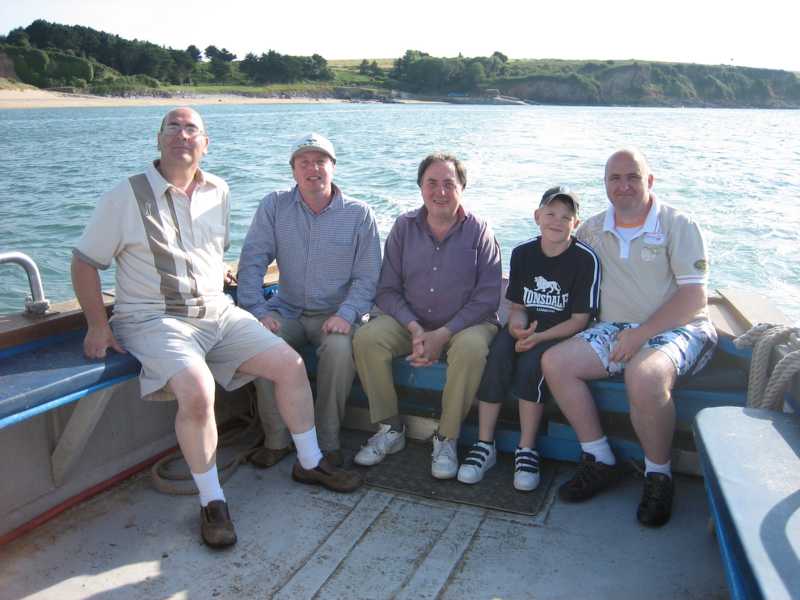
You may also wish to see the accounts of all my trips around the UK Islands by selecting from the list below ;
Farne Islands Inner Farne, Northumbria
73 de Charles

